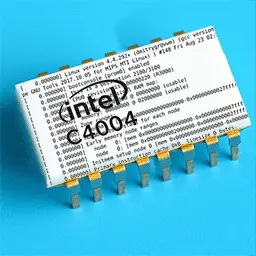TL;DR
I booted Debian Linux on a 4-bit intel microprocessor from 1971 - the first microprocessor in the world - the 4004. It is not fast, but it is a real Linux kernel with a Debian rootfs on a real board whose only CPU is a real intel 4004 from the 1970s. The video is sped up at variable rates to demonstrate this without boring you. The clock and calendar in the video are accurate. A constant-rate video is linked below.



How is it “full Linux” when Linux has always required an integrated MMU (which is why it’s never supported anything less than a 386)? I mean, yes, you can modify it to run on more primitive chips at the expense of having proper virtual memory support, but if you do that I don’t think it counts as “full Linux” anymore!
If you read the article, it is indeed full Linux because the 4004 is running a MIPS emulator that provides the necessary memory management features. Pretty much all of the “run Linux on some old chip incapable of running Linux” projects achieve it via emulating a more featured architecture that Linux supports, not by somehow compiling Linux to natively run on a 4 bit, MMU-less architecture.
This is the whole idea behind Turing-completeness, isn’t it? Any Turing-complete architecture can simulate any other.
Reminds me of https://xkcd.com/505/
Any time I see an article about someone doing things with Redstone circuits, I think about that comic.